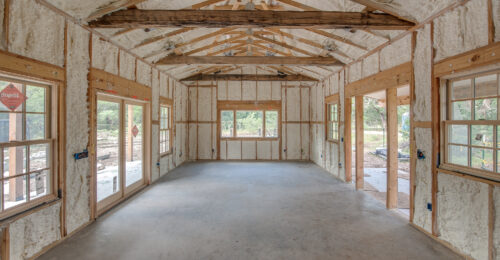Why the Frog?
Besides being a symbol of sustainability, the frog shares many attributes that closely align with the benefits of BASF's spray foam systems, including ENERTITE®, SKYTITE® and especially WALLTITE® closed-cell insulations.
One unique adaptation of a frog is its specialized skin used to regulate moisture, creating a protective barrier against water movement. The frog's ability to adapt and thrive in diverse environments mirrors the versatility of spray foam insulation, which can be applied in varying conditions to nearly every part of a building to adapt to occupant needs in every climate.
Did you know the frog is also known as an indicator of the health of the surrounding environment? ENERTITE, SKYTITE and WALLTITE are GREENGUARD and GREENGUARD Gold certified for sensitive environments like schools & healthcare facilities.




















